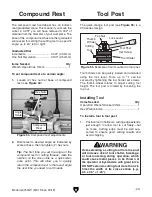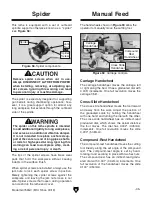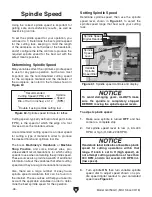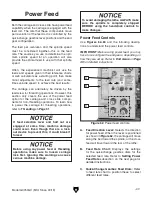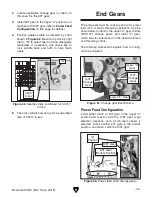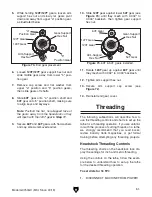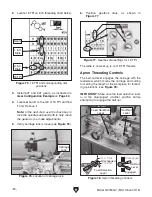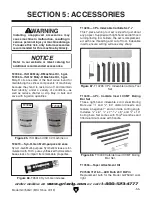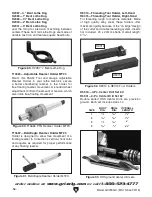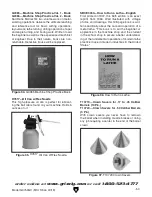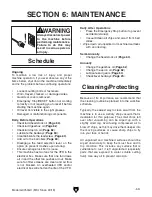
Model G0750GV (Mfd. Since 03/18)
-45-
Spider
This lathe is equipped with a set of outboard
spindle supports otherwise known as a "spider"
(see
Figure 58).
The handwheels shown in
Figure 59 allow the
operator to manually move the cutting tool.
Carriage Handwheel
The carriage handwheel moves the carriage left
or right along the bed. It has a graduated dial with
0.005" increments. One full revolution moves the
carriage 0.56".
Cross-Slide Handwheel
The cross-slide handwheel moves the tool toward
and away from the work. Adjust the position of
the graduated scale by holding the handwheel
with one hand and turning the dial with the other.
The cross-slide handwheel has an indirect-read
graduated dial, which shows the actual distance
the tool moves. The dial has 0.002" (0.05mm)
increments. One full revolution moves the slide
0.200" (5.08mm).
Compound-Rest Handwheel
The compound-rest handwheel moves the cutting
tool linearly along the set angle of the compound
rest. The compound-rest angle is set by hand-
rotating it and securing in place with two hex nuts.
The compound rest has an indirect-read gradu-
ated dial with 0.001" (0.02mm) increments. One
full revolution of the handwheel moves the slide
0.100" (2.54mm).
Manual Feed
Remove spider screws when not in use.
Always DISCONNECT LATHE FROM POWER
when installing, removing, or adjusting spi-
der screws. Ignoring this warning can lead
to personal injury or machine damage.
The spider is especially designed for supporting
gun barrels during chambering operations; how-
ever, it is a great support option for almost any
long workpiece that extends through the outboard
side of the spindle.
Figure 59. Carriage controls.
Carriage
Handwheel
Cross Slide
Handwheel
Compound
Rest
Handwheel
Figure 58. Spider components.
Spider
Spider
Screw
Jam
Nut
The spider on this lathe spindle is intended
to add additional rigidity to long workpieces,
and serve as an additional vibration damper.
It is not intended to replace anchored sup-
port at the center or end of long pipes, shafts,
or rods for high-speed turning. Ignoring this
warning can lead to workpiece whip, creat-
ing a risk of personal injury or death.
The tips of the spider screws have brass wear
pads that hold the workpiece without causing
indents in the surface finish.
When spider screws are installed, always use the
jam nuts to lock each spider screw in position.
Merely tightening the spider screws against the
workpiece and leaving the jam nuts loose is not
safe. Spider screws that loosen during operation
can crash into the lathe end cover.
Summary of Contents for G0750GV
Page 116: ......













